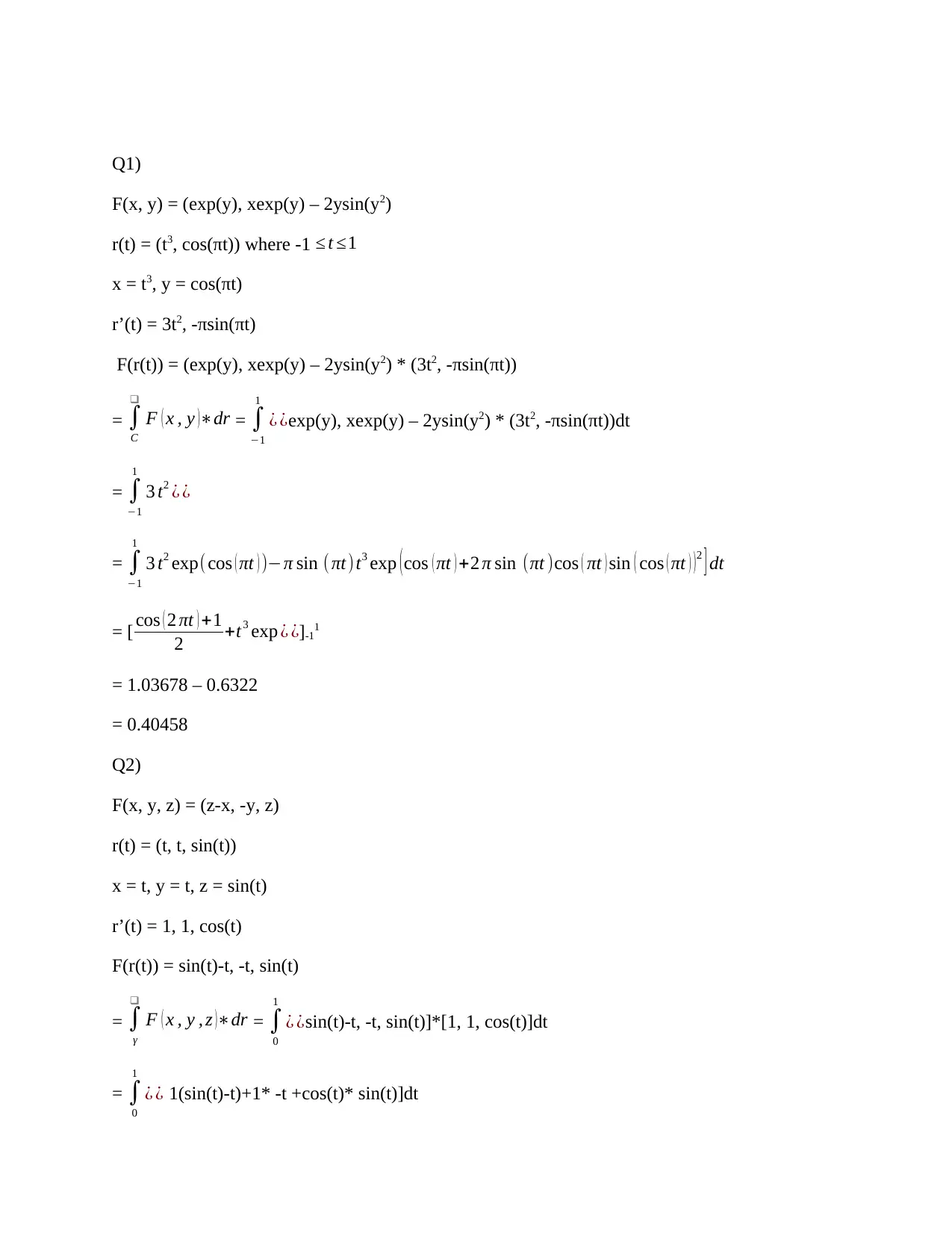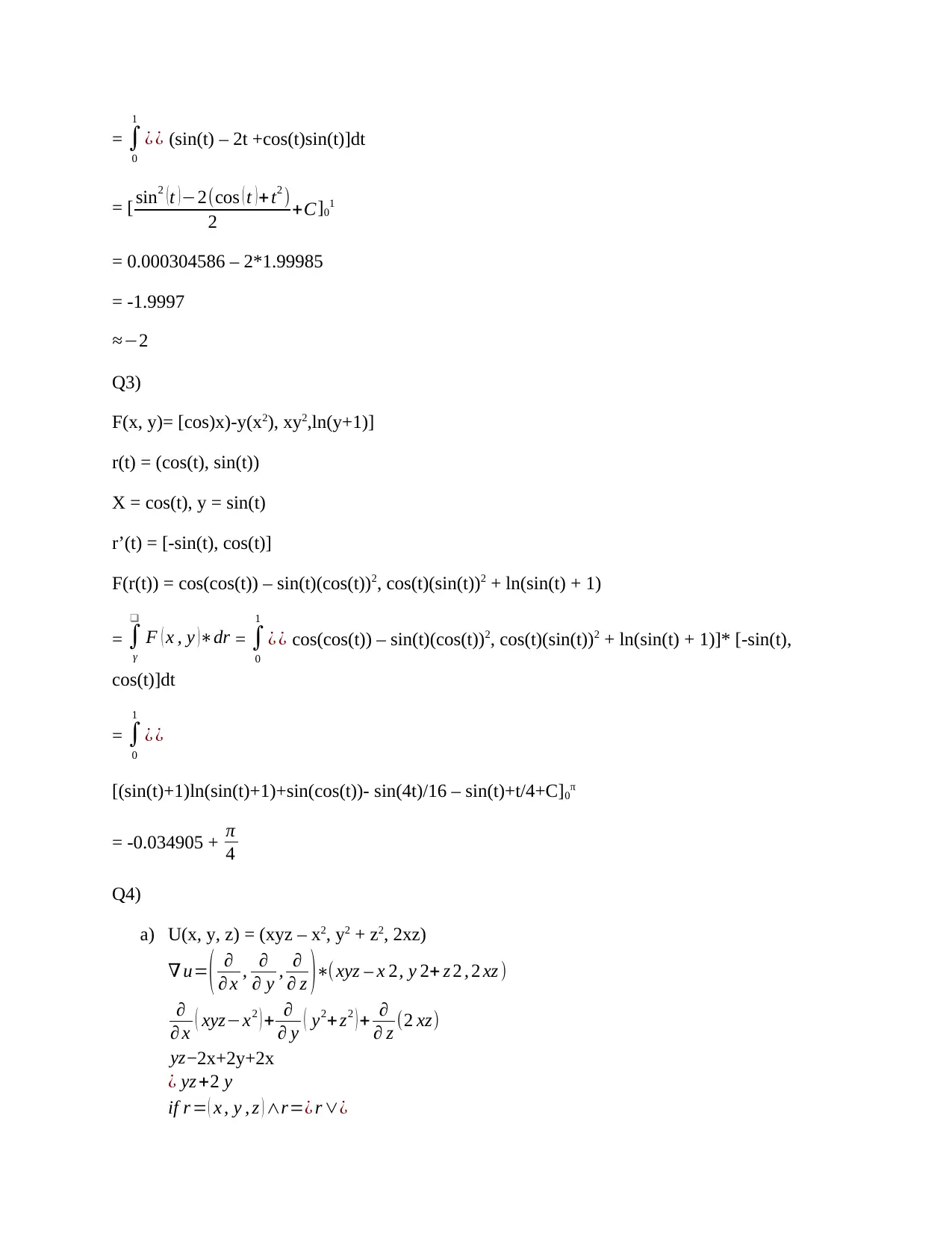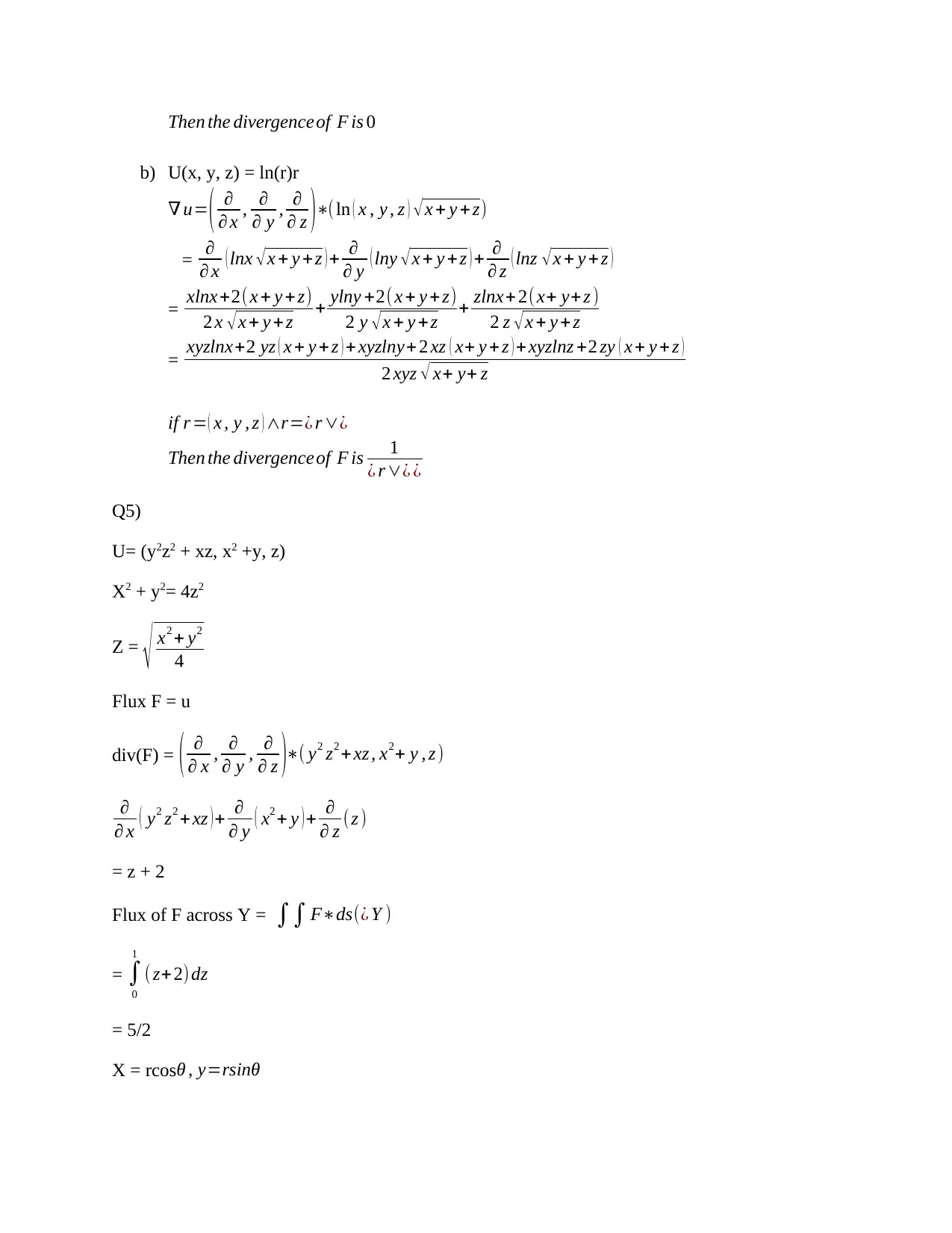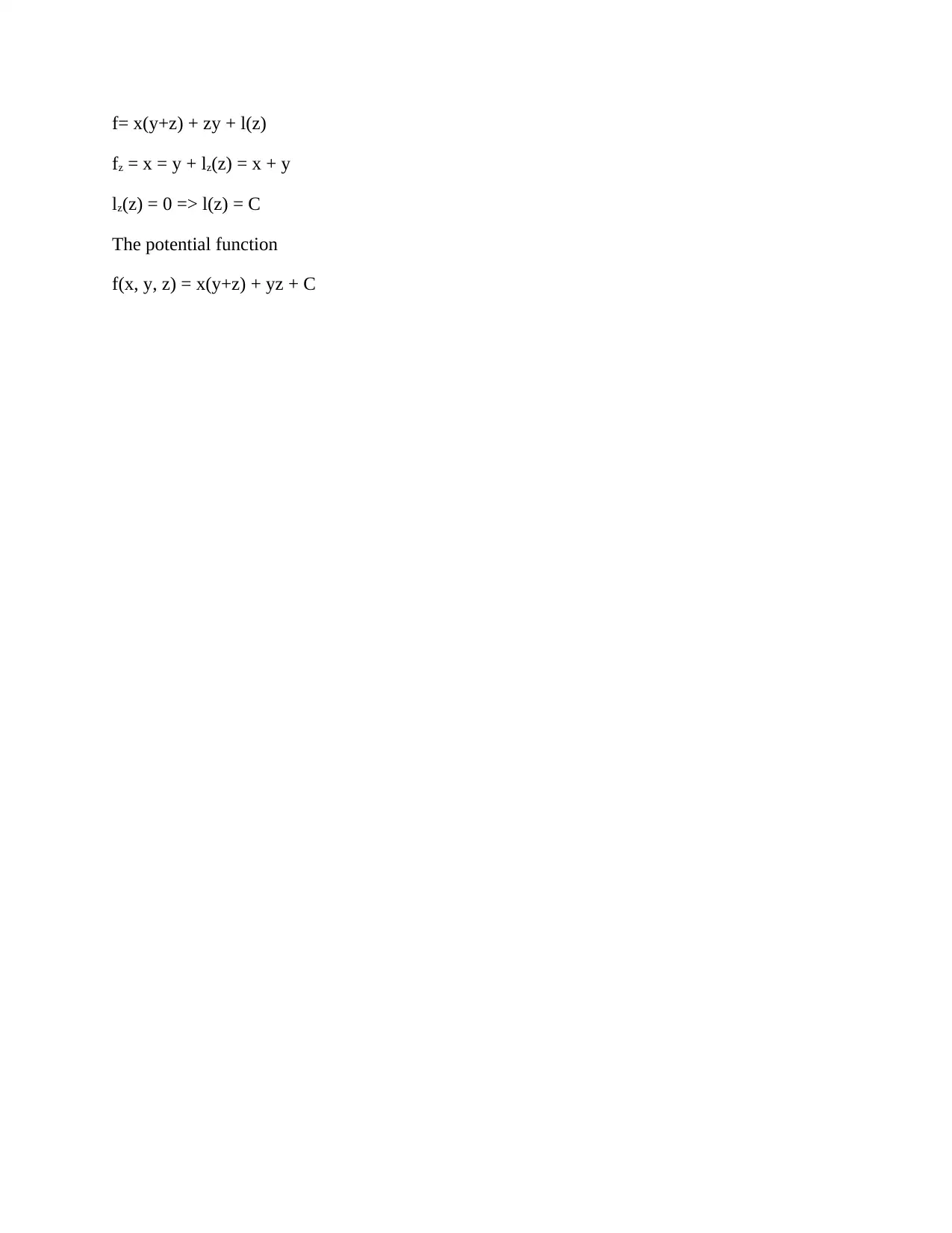Calculus Assignment: Vector Fields, Line Integrals, and Flux Problems
VerifiedAdded on 2021/10/12
|5
|771
|437
Homework Assignment
AI Summary
This document presents solutions to a vector calculus assignment. The solutions cover several key concepts, including line integrals, flux calculations, and potential functions. The assignment involves evaluating line integrals of vector fields along given curves, calculating flux across surfaces, and determining potential functions for conservative vector fields. The problems require applying techniques such as parameterization, the fundamental theorem of line integrals, and the divergence theorem. The solutions demonstrate the step-by-step process for solving each problem, including setting up the integrals, performing the calculations, and arriving at the final answers. The assignment also explores the concept of conservative vector fields and the relationship between the curl of a vector field and its potential function. These solutions are provided to assist students in understanding and mastering the concepts of vector calculus.
1 out of 5











![[object Object]](/_next/static/media/star-bottom.7253800d.svg)